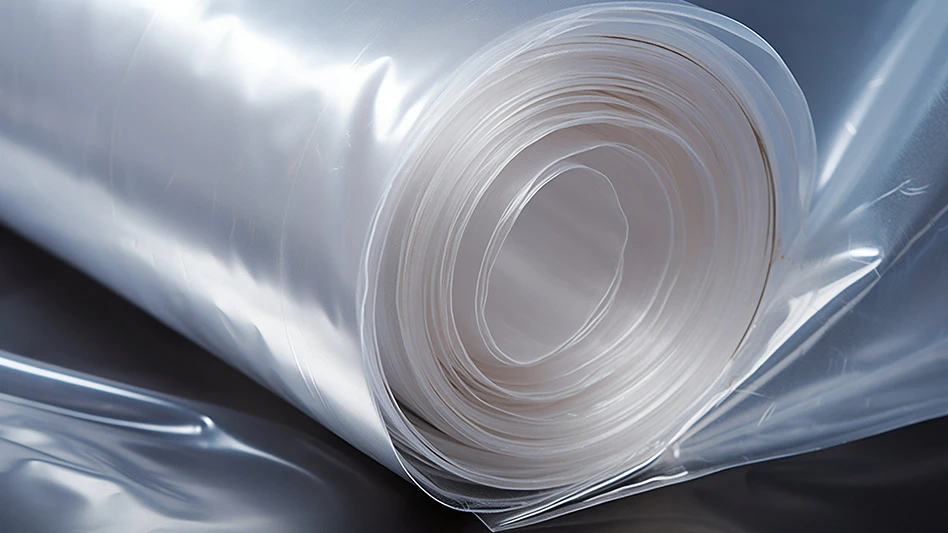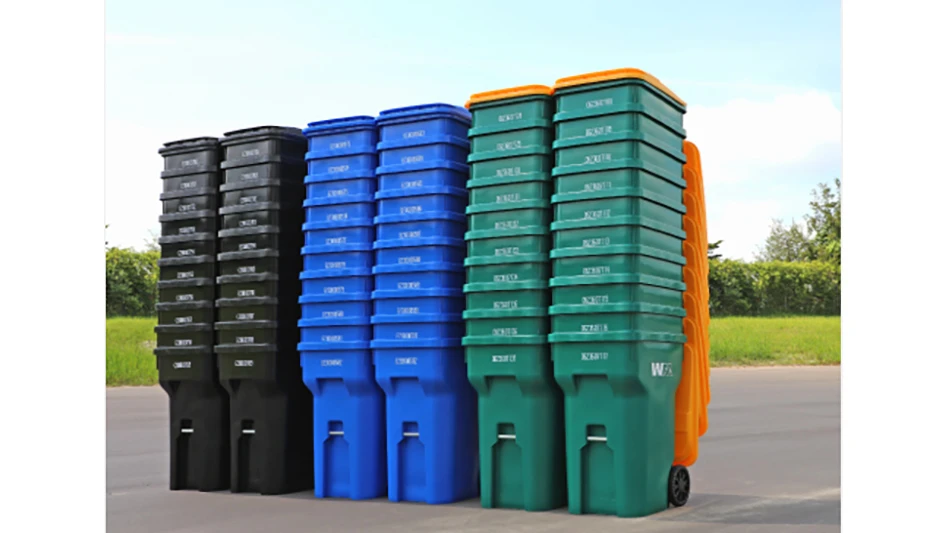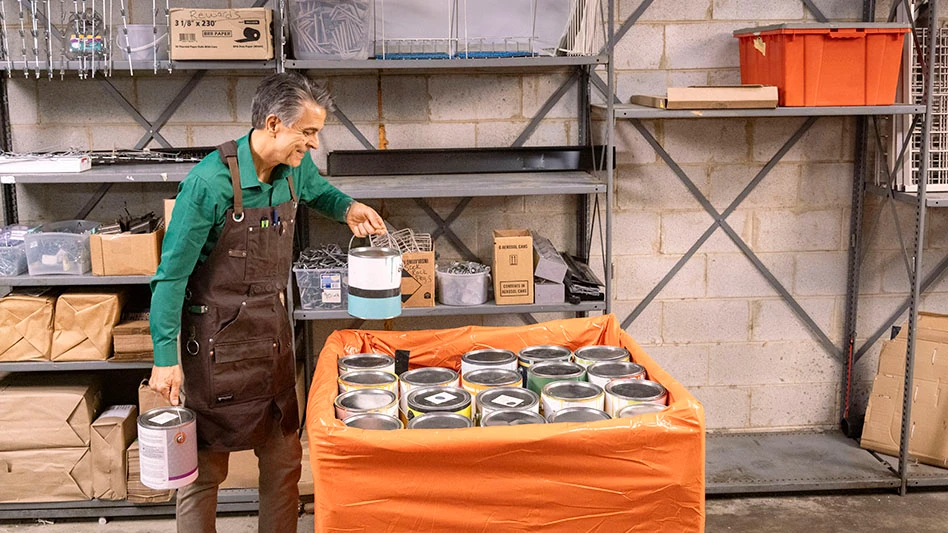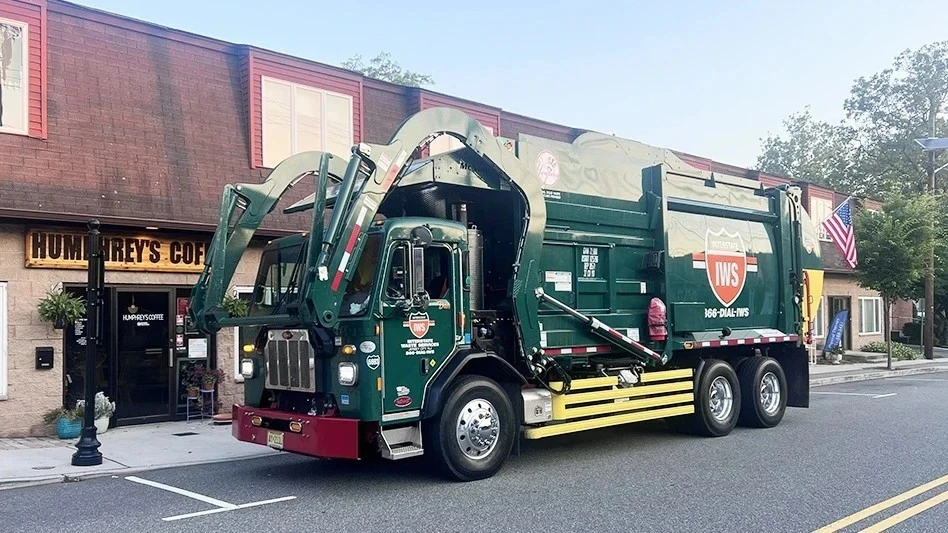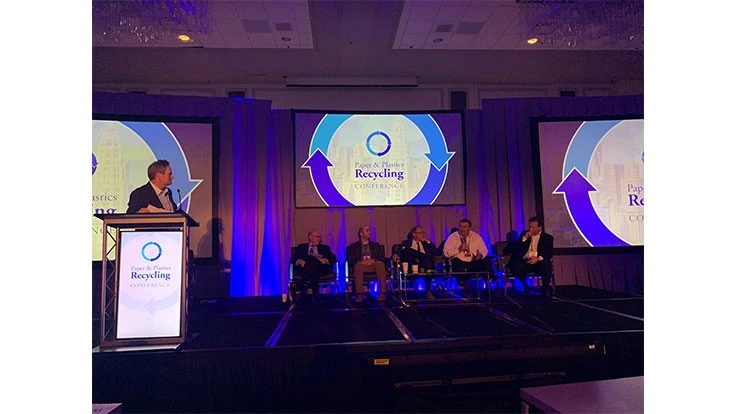
Recycling Today
Figuring out how to integrate robotic sorting technology into recycling facilities is something that Jim Marcinko, vice president of recycling operations at Houston-based Waste Management, has set out to do. During the How Technology is Shaping Recycling session at the Paper & Plastics Recycling Conference Oct. 23-25 in Chicago, Marcinko said he sees equipment and technology manufacturers, including Colorado-based AMP Robotics, RRT Design & Construction, Melville, New York, Eugene, Oregon-based Bulk Handling Systems (BHS) and Stamford, Connecticut-based Van Dyk Recycling Solutions (VDRS), which sat on the panel with him, as partners in the industry.
“The markets are changing. The inbound is changing and the technology is coming along fast, so how do we integrate that into our facilities is very important,” Marcinko said. “A lot of capital will be necessary for it, but you’re in a market downturn at the same time, so we’re trying to balance that and figure out the best path forward.”
Recycling facilities are installing optical and robotic sorters to clean up single-stream contamination and reduce fixed costs, including manual labor.
Pieter Eenkema van Dijk, chief executive officer of VDRS, said the company equipped Phoenix-based Republic Services’ new Plano, Texas, material recovery facility (MRF) with nonwrapping screens and optical sorters to clean up the contamination. At the same time, BHS has deployed 100 robotic sorters in recycling operations around the world, but BHS CEO Steve Miller said recyclers should think of robotics as “one bit of technology that goes into a whole.”
“How the whole system operates is really the key,” Miller said. “How you capture that information and use that to improve performance, we think that’s really the secret sauce around where the industry is going and where it needs to go.”
Technology has “tremendous potential” beyond eliminating labor and cleaning up the stream, said Matanya Horowitz, CEO of AMP Robotics. He pointed to the potential of data, which enables recyclers to identify and track material, understand different pieces of equipment and operating conditions and optimize and monetize operations to “bring control back to that facility.”
Nat Egosi, president and CEO of RRT Design & Construction, added, “The facilities we build today must not only solve the problems of today, but also must solve the problems of tomorrow.”
In the next five years, the suppliers said they will be focusing on how to analyze data from artificial intelligence (AI) to make meaningful decisions and changes at recycling facilities.
“AI gives us information, optical sorters give us information and the systems are able to make adjustments to maximize the results based on what we see coming through,” Miller said. “We’re not at that moment yet, but a lot of our focus as we move forward is to capture information and use that information in intelligent ways, where the people within your systems are making decisions with that data and causing outcomes that result in improved profitability.”
Van Dijk said VDRS’ goal in the next five years is to “have good understanding and properly analyze data to create AI that tells customers what to do.” In the next five years, AI will be able to automatically make necessary changes within the system, he said.
While Egosi said smaller plants will have difficulty sustaining themselves and making the capital investments necessary, Miller sees robotics as an opportunity for recycling facilities of all sizes to “run differently,” spread out capital for investments and even process more tons. He said robotics eliminates the labor issue and allows systems to run 24/7.
Robotic sorters are being used in a variety of applications inside recycling facilities today, including removing contamination on fiber lines and sorting different types of plastics and metals.
“What is also exciting is the broad applicability,” Horowitz said. “We start to see opportunities in municipal solid waste, electronic waste. The technology is able to learn from experience in these different environments, and within MSW, it’s hard to see a place it’s not going to have at least some role.”
He added, "What’s powerful about this technology in recycling is it allows us to identify individual pieces of material and monitor how they move through the recycling stream. It’s creating all sorts of opportunities to bring intelligence and control to these recycling facilities.”
Marcinko said the manufacturers also have a role to play in training staff on how to use the technology.
“While the technology is great, we need to be able to train our staff to use it,” he said. “We historically weren’t using technologically advanced equipment. Now when we hire people, we have to look at their skill set and how to advance them far enough, so they can understand how it works. We really need training efforts from manufacturers to support us.”
Latest from Waste Today
- Liquid Environmental Services acquires Grease Masters
- Iron Bull addresses scrap handling needs with custom hoppers
- REgroup, CP Group to build advanced MRF in Nova Scotia
- Brass Knuckle designs glove for cold weather applications
- WM, city of Denver partner to develop RNG facility at municipal landfill
- National Stewardship Action Council, Stewardship Action Foundation launch National Textile Circularity Working Group
- Nopetro invests $50M to construct Florida RNG facility
- USCC announces new Member Connect outreach program
